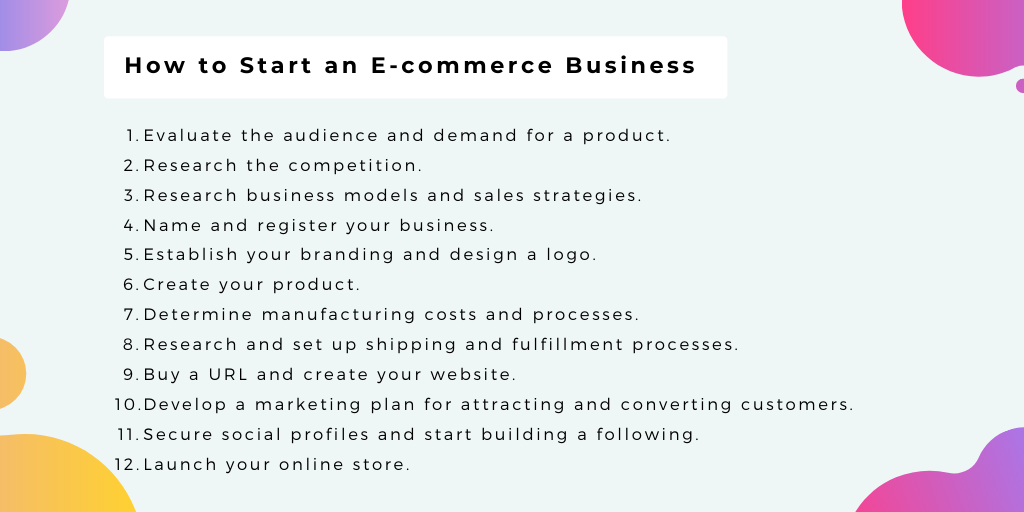
What is E-commerce?
January 2020, Digital Marketing
E-commerce, short for “electronic commerce,” is the method of buying and selling products online.
E-commerce in Dubai is more popular than ever before. For many people, it has renewed brick-and-mortar stores as the preferred way to shop. Smartphones have greatly contributed to the growth of e-commerce. It’s estimated that smartphones will account for 70% of all e-commerce traffic by the end of this year.
Social media channels like Facebook and Instagram have helped e-commerce gain popularity in Dubai. Facebook reported advertising revenue of $9.16 billion in the following quarter of 2017 and 87% of Facebook’s total advertising revenue comes from smartphones. As social media platforms merge with e-commerce platforms, more people will begin mixing e-commerce into their daily shopping practices.

E-commerce Trends in 2020
The most significant trend around e-commerce websites right now is growth — and that growth spreads far and wide.
Dubai E-commerce Growth
The total value of the Dubai e-commerce market is assumed to rise exponentially in 2021, ranging between US$ 8.98 billion and US$ 10 billion as per the forecasts. Furthermore, the market is expected to increase at an average rate of 25% per year by 2021. The rise in the e-commerce market is forecast to be fueled to a great extent by mobile devices (smartphones and tablets), as the UAE has the highest smartphone penetration rate in the world. Smartphone usage is reported to be even higher among millennial’s (over 90% according to a Google survey).
Global E-commerce Growth
Global e-commerce is quickly growing, too. Emarketer trend data shows that retail e-commerce sales may exceed $4.058 trillion by as soon as 2021. As more customers look for products across borders and from international sellers, a rise in e-commerce sales is evident around the world. The Nielsen Connected Commerce report said, “Customers are frequently looking outside their country’s borders, as per a study 57% of the customers made an online purchase were made from an overseas retailer.”
E-commerce Growth by Category
ComScore data shows that a few particular industries are seeing rapid change regarding retail e-commerce growth. Categories like jewelry and watches were at the top of the growth chart (as of 2019) with 39% growth, followed by home decor equipment (26%), and video game consoles/accessories (24%). With this framework of understanding e-commerce stats, let’s now move on to some types of e-commerce, best practices, and tips around the e-commerce world.
Types of E-commerce
Business to Business (B2B)
Goods and services are sold from one business to another.
Business to Consumer (B2C)
This is one of the most basic types of e-commerce. It is a business that sells products to a consumer.
Consumer to Consumer (C2C)
Customers sell directly to consumers via online marketplaces.
What are the benefits of E-commerce?
It can reduce costs by restricting the expenses of owning and running a physical property. It’s faster and more comfortable than most traditional businesses, and it can reach customers in areas where geographical boundaries would have prevented the expansion of the physical store.
Investing in e-commerce can also boost revenue as it allows businesses to reach more consumers than physical stores alone. For customers, e-commerce reduces costs by giving you more options
E-commerce allows you to compare prices with the entire world, rather than just your geographical area. As e-commerce evolves, it’s necessary to keep an eye on the latest e-commerce trends. Even if you’re a physical store, you can still profit from learning about e-commerce.
Benefits to Buyer:
- Convenience
- Easier and Quicker Transactions
- Easier Price and Product Comparison
- Improved Delivery Process
- Targeted Communication
Benefits to Seller:
- Ability to sell goods around the world
- More control over the selling process and tracking of orders
- Greater visibility to customers via SEO
- Control Over Inventory Management
Best Practices for E-commerce Websites
When you’re ready to build an e-commerce website, there are a few best methods to keep in mind that will help you get amazing results:
Use Mobile-Friendly Theme
BrightEdge data shows that 57% of website traffic now comes from smartphones and tablets — which means it’s necessary to use a mobile-friendly theme when developing your e-commerce website. Take a look at our e-commerce template:

Optimize for the web
Website optimization includes a wide range of strategies that help convert more site visitors into potential leads, but let’s focus on two important strategies:
Write eye-catching product descriptions: Use compelling copywriting skills to make your product descriptions sell. Furthermore, use the psychological tactics – Fear of missing out – all of which will encourage the audience to buy the products.
Add stunning product images: When it comes to marketing, images play an extremely important role — especially for online customers who can’t see or touch products before buying them.
Create an impressive customer experience
Research shows that consumer experience will overtake price and product as the chief brand differentiator for sales by 2021. This means it’s necessary to focus on creating an impressive consumer experience across all of your brand’s various touch-points.
A few ideas of impressive customer experience are:
Add a FAQ Page: Adding frequently asked questions (FAQ page) on your e-commerce website helps potential consumers quickly and easily find the information they need to achieve a purchase.
Reduce image size: Survey data shows that website visitors expect a web page to load in less than three seconds. At more than three seconds, they leave the page and aren’t expected to return. Reduce the size of your e-commerce site images so it loads quickly.
Increase user-generated content: Implementing user-generated content on your e-commerce website means adding components of social proof — which can enhance the overall buying experience for consumers.
E-commerce Marketing Best Practices
What do you need to understand about marketing for an e-commerce business? Here are a few best methods that can help fire-up your efforts.
Test Social Media Advertisement: With 1.18 billion daily active audiences, consider targeting your consumers with social media posts and videos. Analyze to see what works best and boost sales and increase revenue.
Gather feedback from surveys: The best way to engage your audience is to ask them. Take advantage of online surveys to gather feedback on everything from goods to your marketing efforts to customer service communications.
Stay in touch by collecting email addresses: Recent data shows that most of the companies agree that email marketing offers “good” to “excellent” ROI. By collecting email addresses on-site and asking consumers to opt-in to future announcements from you, you can give the audience a reason to keep coming back to your e-commerce site again and again.
Use personalization to tailor offers: Personalization is more prominent than ever for online customers. Furthermore, research shows 74% of online customers get annoyed with e-commerce sites when offers, ads, or promotions appear that have nothing to do with their interests. Make sure you’re personalizing your email marketing efforts and generally trying to make each consumer feel like you’re speaking only to him or her.
How to Increase E-commerce Sales?
Hook potential customers in the consideration stage
If you only try to approach prospective customers in their decision stage, you’re too slow. Furthermore, if you provide appropriate content in the awareness stage and fail to follow-up, you risk the consumer to forget about you as they progress along the buyer’s journey. Once you catch a prospect with your content keep them engaged and send them to their present stage.
Be more active on social media
Don’t underestimate the potential of social media platforms when it comes to online sales. Instagram reports that 60% of the audience find products on social media channels, which makes sense with the implementation of shoppable content. Meet your potential consumers where they are and remove friction from the shopping process by guiding them seamlessly to a sale.
Use paid advertisement
Search engines deliver billions of results daily, and most of the results are for services or products just like yours. The problem is the competition among other e-commerce sites. However, when done right, paid advertising can place your -store in front of the right audience and ahead of your other competitions.
Get (or provide) some data before they leave your website
Not all visitors who visit your e-commerce site is ready to buy — engage them anyway. Analyze why someone would visit and bounce off a web page. Whatever the reason, your job is to give them something that will keep you on top of their mind as they continue their search.
Invest in re-engaging shopping bag abandoners
Shopping bag abandonment is certain but not permanent. Sometimes customers just need a little push to get back to their shopping cart either through remarketing or a mild email reminder. Before you reach out, make sure to check some of the basic reasons why prospects abandon their shopping carts.
How to Choose the Best E-commerce Software?
Flexible Payment Options: Consumers want to pay in different ways today — from digital wallets to credit cards and beyond. Look for an e-commerce software solution that is compliant enough to support various types of secure payment options.
Multiple Language Abilities: Your consumers may be coming from all over the world, so you would need to speak their language. It’s a good idea to work with an e-commerce solution that supports different types of languages.
Customer Support (E-commerce): Take the time to investigate the platform’s service in brief. If an emergency shows up on the e-commerce website, you want to be assured you’ll have fast, reliable support at any moment.
Themes and Customization Abilities: You should be able to customize themes that enable you to personalize and add business branding.
Domain Name Customization: Ensure that you can get a custom domain name (domain name must reflect your business).
If you’re looking to start an e-commerce business or want to switch from your current platform, consider the solution below:
ShopX E-commerce Solution
ShopX erases the boundaries of what is possible; giving you the power to create bold and unique shopping experiences that will transform your business. Built for rapid and cost-effective innovation, the platform combines rich, out-of-the-box functionality making the best e-commerce solution for the business.
The Future of E-commerce
The future of e-commerce is very bright, and with the right marketing strategy and tools, launching an e-commerce business can be more comfortable than you ever imagined. An e-commerce business won’t have the same needs as an offline retailer that wants to increase retail footfalls. There are e-commerce strategies and methods that are better for selling products and other services to businesses and customers.
Join our fellow professionals
Get expert opinion and tips straight to your inbox. Subscribe to our blog below.




